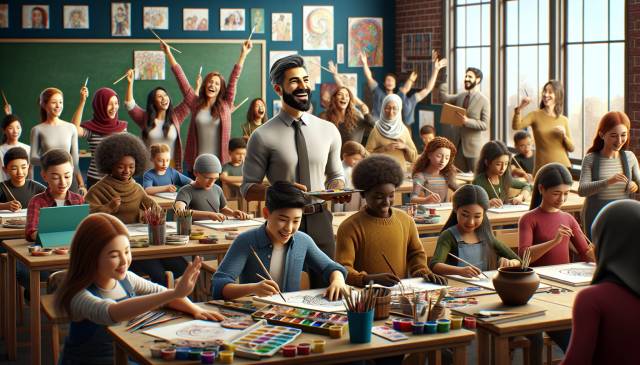
Education is often viewed through the lens of core subjects like math and science, but the significance of arts in education should not be overlooked. The artsâencompassing music, theater, visual arts, and danceâplay a crucial role in the holistic development of learners. Integrating arts into the educational curriculum promotes creativity, critical thinking, and emotional intelligence, which are essential skills in today's dynamic world.
Why Arts Matter in Education
The inclusion of arts in education provides numerous benefits that extend beyond the classroom. Here are some key reasons why arts matter:
- Enhances Creativity: Engaging in artistic activities encourages students to think outside the box and explore innovative solutions.
- Improves Academic Performance: Research has shown that students who participate in arts programs tend to perform better in other academic subjects.
- Builds Confidence: Creating art allows students to express themselves and gain confidence in their abilities.
- Encourages Collaboration: Many art forms, like theater or music ensembles, require teamwork, fostering collaboration among peers.
- Develops Emotional Intelligence: The arts help students understand and manage their emotions, as well as empathize with others.
Creativity and Critical Thinking
In a rapidly changing world, the ability to innovate and solve complex problems has never been more critical. Arts education fosters these skills by:
- Encouraging Exploration: Students are prompted to experiment with different ideas and mediums, cultivating a mindset open to discovery.
- Facilitating Problem-Solving: Creative projects often require students to confront challenges and devise effective solutions.
- Nurturing Imagination: The practice of visualizing concepts or narratives enhances imaginative thinking.
Real-World Applications
The benefits of arts education extend into various career fields. Here are a few examples of how creativity is valued in the workforce:
- Technology: Creative problem-solving is essential in tech development and innovation.
- Business: Marketing and branding require a strong aesthetic sense and creativity to stand out.
- Healthcare: The ability to empathize and understand patients' needs is enhanced through artistic expression.
Integrating Arts into Education
Educational institutions can integrate arts into their curriculum in various ways:
- Cross-Disciplinary Projects: Combine art with subjects like science or history to create engaging learning experiences.
- After-School Programs: Establish clubs or activities focused on different art forms to encourage participation beyond academic hours.
- Partnerships with Local Artists: Invite artists to collaborate with students, providing real-world insights into their creative processes.
Overcoming Challenges
While the value of arts in education is clear, challenges remain in its implementation. Budget constraints and standardized testing pressures can limit arts programs. However, educators and advocates can:
- Advocate for Funding: Push for policies that allocate resources to arts education.
- Showcase Success Stories: Highlight the positive impact of arts on student outcomes to gain support from stakeholders.
- Engage Parents and Community: Foster a community-driven approach to support arts initiatives in schools.
Conclusion
The significance of arts in education cannot be overstated. By fostering creativity, critical thinking, and emotional intelligence, the arts prepare students for the complexities of modern life. Educators, parents, and communities must work together to ensure that arts education remains a vital component of a well-rounded educational experience. Embracing the arts not only enriches students' lives but also cultivates a future generation of innovative thinkers and empathetic leaders.
